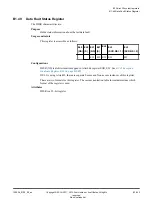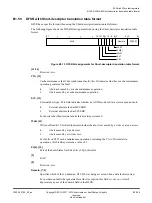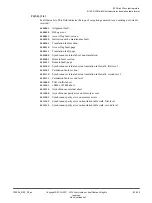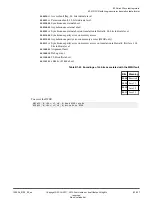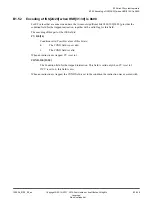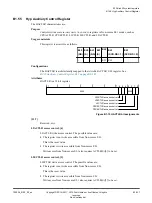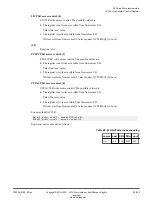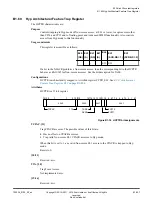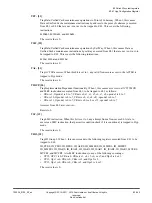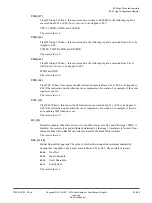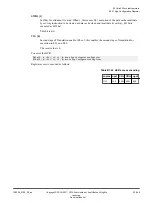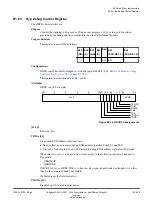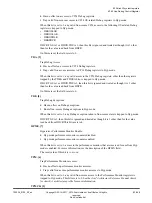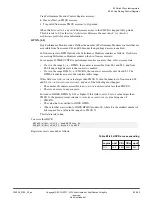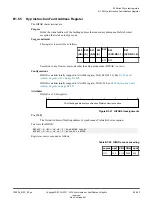
B1.60
Hyp Architectural Feature Trap Register
The HCPTR characteristics are:
Purpose
Controls trapping to Hyp mode of Non-secure access, at EL1 or lower, to coprocessors other
than CP14 and CP15 and to floating-point and Advanced SIMD functionality. Also controls
access from Hyp mode to this functionality.
Usage constraints
This register is accessible as follows:
EL0
(NS)
EL0
(S)
EL1
(NS)
EL1
(S)
EL2 EL3
(SCR.NS = 1)
EL3
(SCR.NS = 0)
-
-
-
-
RW RW
-
If a bit in the NSACR prohibits a Non-secure access, then the corresponding bit in the HCPTR
behaves as RAO/WI for Non-secure accesses. See the bit description for TASE.
Configurations
HCPTR is architecturally mapped to AArch64 register CPTR_EL2. See
Attributes
HCPTR is a 32-bit register.
RES
1
31 30
21 20 19
16 15 14 13 12 11 10 9 8 7 6 5 4 3 2 1 0
RES
0
TCPAC
RES
0
TTA
TASE
TCP11
TCP10
RES
1
RES
0
Figure B1-16 HCPTR bit assignments
TCPAC, [31]
Trap CPACR accesses. The possible values of this bit are:
0
Has no effect on CPACR accesses.
1
Trap valid Non-secure EL1 CPACR accesses to Hyp mode.
When this bit is set to 1, any valid Non-secure EL1 access to the CPACR is trapped to Hyp
mode.
Resets to 0.
[30:21]
Reserved,
RES0
.
TTA, [20]
Trap Trace Access.
Not implemented.
RES0
.
[19:16]
Reserved,
RES0
.
B1 AArch32 system registers
B1.60 Hyp Architectural Feature Trap Register
100236_0100_00_en
Copyright © 2015–2017, 2019 Arm Limited or its affiliates. All rights
reserved.
B1-237
Non-Confidential
Summary of Contents for Cortex-A35
Page 4: ......
Page 18: ......
Page 26: ......
Page 27: ...Part A Functional Description ...
Page 28: ......
Page 145: ...Part B Register Descriptions ...
Page 146: ......
Page 573: ...Part C Debug ...
Page 574: ......
Page 845: ...Part D Appendices ...
Page 846: ......

